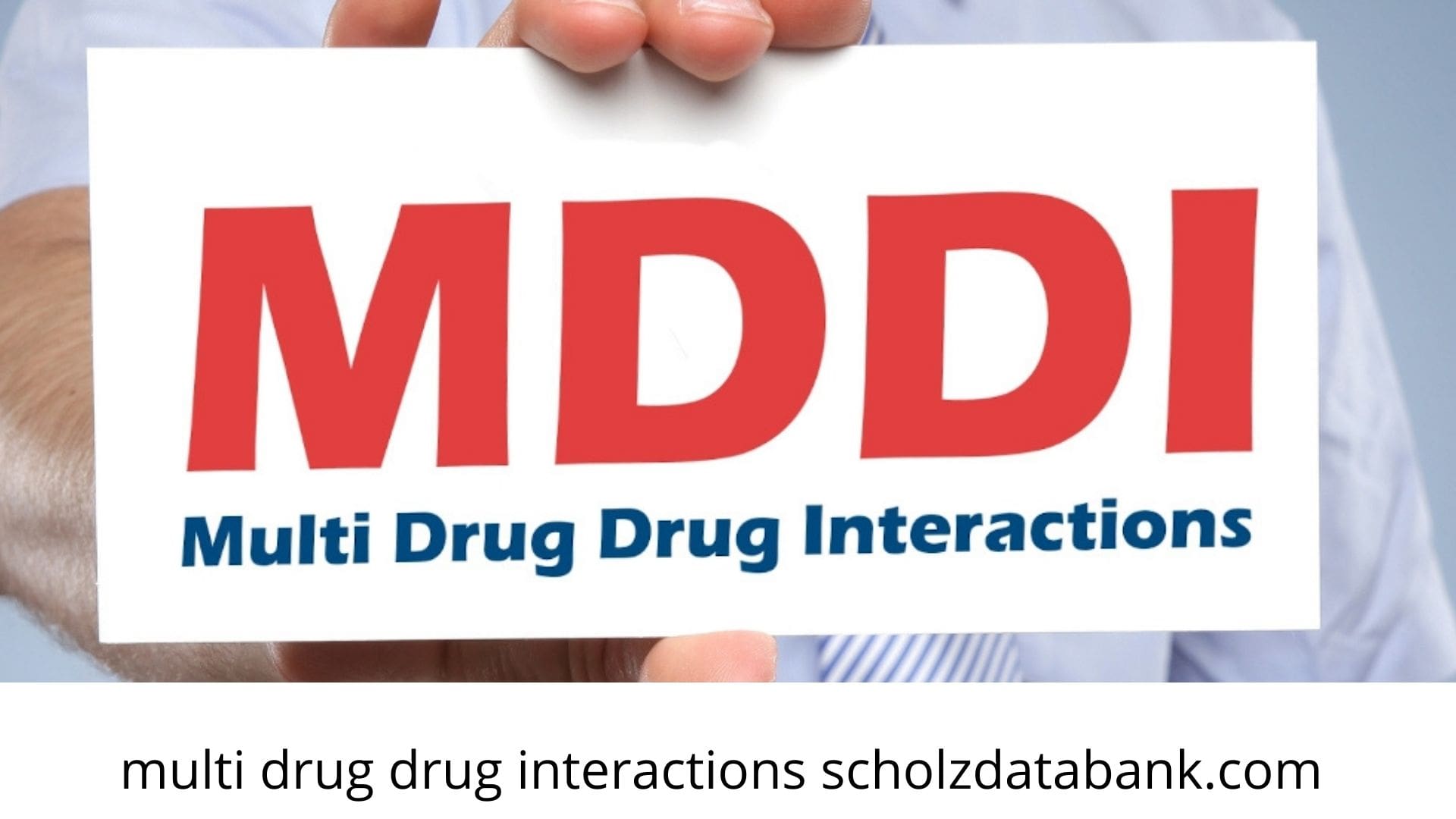Predicting changes of drug exposure due to kinetic multiple drug drug interactions: The MDDI-Calculator of SCHOLZ Databank proves good performance in comparison to the scientific standard method
With the thesis „Quantification of Drug Drug Interactions“ Ulrich Ruben Luecht, a german pharmacist, has presented the results of his 5-years research project in clinical pharmacy (1). The focus was on the drug drug interaction (DI) of venlafaxine as substrate due to enzyme inhibition through the strong inhibitors bupropion and itraconazole in the pairwise relationship as well as in the triple combination resulting in a multiple drug drug interaction (MDDI).
With the thesis „Quantification of Drug Drug Interactions“ Ulrich Ruben Luecht, a german pharmacist, has presented the results of his 5-years research project in clinical pharmacy (1). The focus was on the drug drug interaction (DI) of venlafaxine as substrate due to enzyme inhibition through the strong inhibitors bupropion and itraconazole in the pairwise relationship as well as in the triple combination resulting in a multiple drug drug interaction (MDDI).
The focus was furthermore on looking at the venlafaxine interactions by comparison of two decision support software tools: On the one hand PK-Sim® and on the other hand the MDDI-Calculator of SCHOLZ Databank (SDB). PK-Sim® is a simulator software which assesses the changes of drug exposure and the AUC respectively of substrates in the so called „physiologically based pharmacokinetic model“ (PBPK) with a complex system of 18 compartments und based on comprehensive drug, physiological and patient data. PBPK-Software is acknowledged by drug approval agencies such as the FDA or the EMA as scientific standard method to assess relevant kinetic drug drug interactions. The SDB MDDI-Calculator is based on a model of scaled drug properties having an impact on the velocity determining kinetic processes of the transport, metabolism and elimination of drugs (2). Accordingly the changes of drug exposure of substrates are assessed due to the inhibition of these processes, including the impacts of multiple mechanisms and multiple drug drug interactions (MDDI).
A publication presenting the methods and the results of the thesis in detail is in progress. Some conclusions may be already drawn based on the research and the AUC changes assessed either with PK-Sim® or with the SDB MDDI-Calculator:
Both software systems computed practically no clinically relevant drug interaction effect for the pairwise interaction when venlafaxine is administered concomitantly with bupropion or in CYP2D6 poor metabolizers; this outcome is in accordance with the facts that venlafaxine is mainly dependent on CYP2D6 and its metabolite O-desmethylvenlafaxine (ODV) is also pharmacodynamically active. And both software systems computed an increase of the pharmacodynamically active moiety due to venlafaxine and ODV for the triple interaction when a strong CYP3A4 inhibitor such as itraconazole or ketoconazole was administered, too.
The AUC values assessed by the MDDI-Calculator of SCHOLZ Databank for the pair-interaction venlafaxine – itraconazole and ketoconazole respectively in EM or without CYP2D6 inhibition as well as the triple interaction venlafaxine – bupropion – itraconazole or ketoconazole were very well consistent with the published in-vivo reference values (3, 4); there was no change of the standard setting of the scaled inhibition capacity of itraconazole or ketoconazole needed. The PK-Sim® computed AUC value increases were comparably lower based on the standard presetting for the use of itraconazole in the PK-Sim® software. This result was commented in the thesis as follows: „The itraconazole-model of PK-Sim® was used unchanged and therefore these results represent only a supporting hint; nevertheless and despite of the deviation from the higher values assessed by the MDDI simulation with SCHOLZ Databank the PK-Sim® software is appropriate for a clinical use.“ And furthermore: „Summarized the MDDI-Calculator of SCHOLZ Databank represents a helpful tool, to predict the impacts of multiple inhibitors of Cytochrom P450 enzymes on the the exposition of a substrate which is metabolized through multiple enzyme mechanisms.“
Comparing the assessment methods which both are supposed to represent options to improve the individual pharmacotherapy it is pointed out that the PBPK-PK-Sim® method requires comprehensive a priori knowledge about substrates, inhibitors, settings of the physiological compartment model, and patient data; moreover high efforts of tests and evaluations are needed. The SDB MDDI-Calculator is concerning the model settings more limited and can be configurated in a much simpler way. Therefore, if the relevant data for bioavailability, transport, metabolism and elimination are known, the software can be adapted within a few hours to support the prediction about AUC changes of a new ingredient or due to a new ingredient, including scenarios where kinetically similar substrates or inhibitors are involved. The MDDI-Calculator takes in particular regard of how one drug in a polypharmacy medication is affected by all other drugs and their multiple interaction effects with the option to include the patient’s genetics and/or the stages of kidney disease into the analysis.
SDB contains about 700 active ingredients, substrates and inhibitors, with their MDDI relevant properties. The MDDI-Calculator is subject to an ongoing process of calibration based on the evaluation of kinetic in-vitro and in-vivo-drug-drug-interaction literature; about 80% and 90% respectively of the AUC assessments deviate by less than 10% and 20% respectively from the published in-vivo-data of kinetic drug interactions. Thereby billions of polypharmacy medications with 5 or more drugs which might be prescribed by doctors can be analysed within seconds during the prescription or dispensing process. Thus the SDB MDDI- Calculator enables prescribing doctors and consulting pharmacists to detect multiple drug drug interactions in a practically infinite universe of polypharmacy and to avoid medical errors due to drugs at costs which are much lower compared to those caused by the use of PBPK software or the performance of kinetic in-vivo studies. As the SDB comes with standard U.S. american interfaces supporting CCDA formated patient data transmission according to ONC interoperability standards, OAuth 2.0, and Iframe technology any EMR-, e-prescribing- or pharmacy-software can easily connect to the SDB MDDI-Calculator. Thereby the seamless transmission of patient data and the fast analysis of medications may be provided practically to all digitalized doctors and pharmacists in the U.S. at the point of care and at affordable costs.
Wolfgang Scholz
Founder of SCHOLZ Databank
Wolfgang Scholz
Founder of SCHOLZ Databank
Literatur:
(1) Thesis for the obtainment of the doctoral degree : „Quantification of drug drug interactions“, Faculty of Mathematics and Natural Sciences, University of Muenster, Germany, 2022. Original in german: Quantifizierung von Arzneimittelinteraktionen, Ulrich Ruben Lücht, Mathematisch-Naturwissenschaftliche Fakultät, Westfälische Wilhelms-Universität Münster, 2022;
(2) Wolfgang U. Scholz. Zur Pharmakokinetik von Arzneimitteln bei multiplen Interaktionen; Krankenhauspharmazie 37, Nr. 11, 2016: 497-505
(3) Prescriber Information Venlafaxine Hydrochloride Tablet Cadila Healthcare Limited 10/2018
(4) Lindh JD, Annas A, Meurling L, Dahl M-l, AL-Shurbaji A. Effect of ketoconazole on venlafaxine plasma concentrations in extensive and poor metabolisers of debrisoquine. Eur J Clin Pharmacol 2003;59(5-6);401-6.

